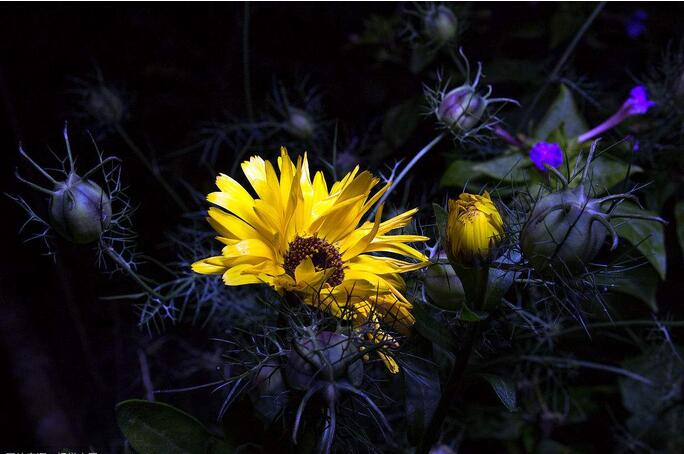Most plants grow buds, flower, or lie dormant at specific times of year.
大多數(shù)植物都在每年特定時間里發(fā)芽,開花,或者冬眠。
What triggers these seasonal changes?
什么原因?qū)е轮参锏募竟?jié)性變化?
Temperature and rainfall often play a role, but the most important factor to many plants is the length of the day.
通常,影響因素包括溫度和降雨,但是對許多植物來說,最重要的因素是晝長。

At least, that’s what biologists thought until the 1940s, when the whole concept of day length sensitivity in plants was turned upside down.
至少在20世紀40年代之前,生物學家們是這么認為的,直到植物對晝長敏感的理論徹底被推翻。
Experiments showed that plants that seem to flower in response to day length actually respond to night length.
實驗顯示,那些看起來受晝長影響而開花的植物其實是受夜長影響。
In other words, what prompts irises to bloom in summer in North America isn’t longer sunny days, but shorter nights.
換句話說,促使北美地區(qū)的鳶尾花在夏季盛開的不是更長的白晝而是短暫的夜間。
Here’s how biologists figured out how important nightlife can be to plants.
我們來看看生物學家是如何確定夜晚對植物的重要性吧。
They started with the cockle burr plant, which flowers when days are short.
他們先以蒼耳為例,這種植物會在晝長較短時開花。
譯文為可可英語翻譯,未經(jīng)授權(quán)請勿轉(zhuǎn)載!












